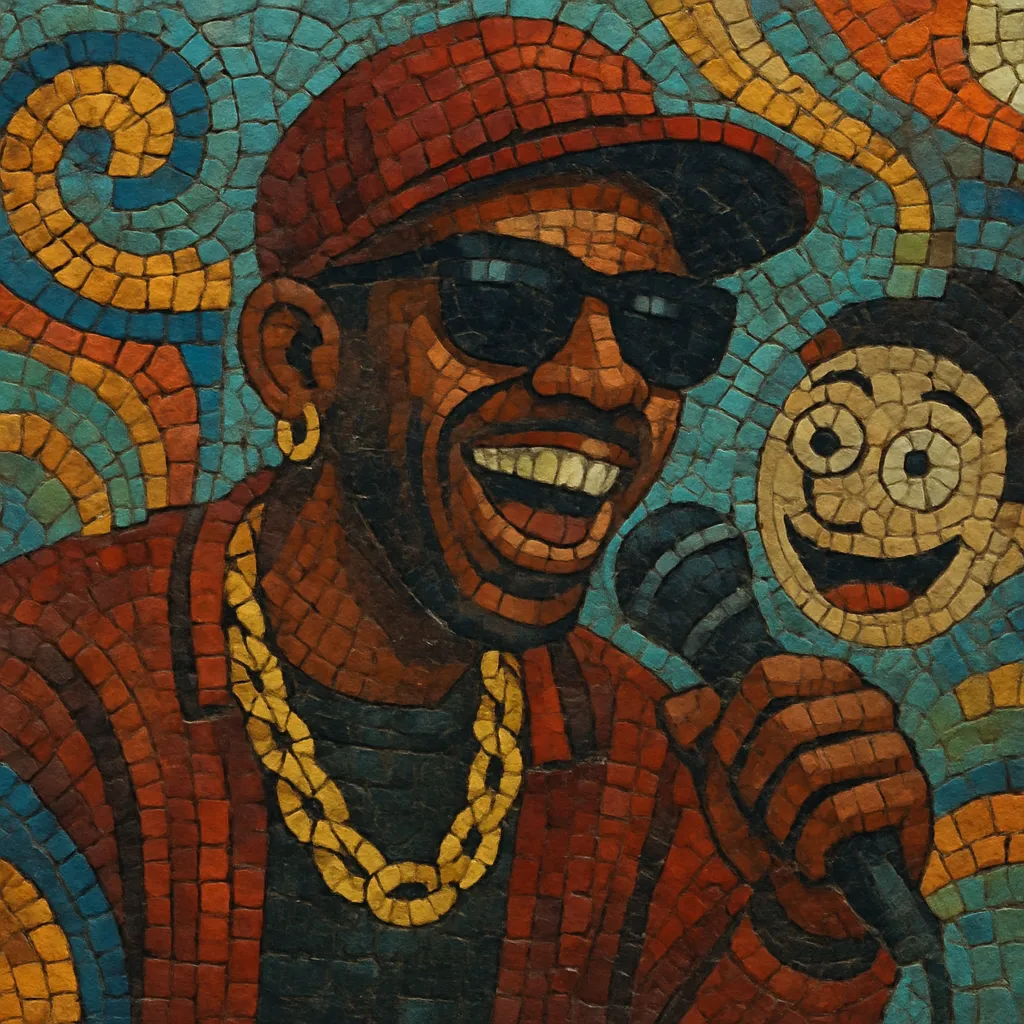
Comedy hip hop blends rap’s rhythmic delivery with humor, satire, and parody. It uses punchlines, exaggerated boasts, comedic storytelling, and playful wordplay over beats that range from old-school boom-bap to glossy pop-rap and trap. The tone can swing from lighthearted and goofy to sharp social satire, with artists often adopting humorous personas.
Musically, it remains recognizably hip hop—verses, hooks, 16-bar structures, ad‑libs—while embracing comedic devices like set‑up/punchline pacing, callbacks, irony, and absurd specifics. Skits, voice-acting, and sound effects are common, and videos or live performance often heighten the jokes with visual gags.
Comedy hip hop emerged during the party-rap and old-school eras, when humorous narratives and novelty singles began to chart. Tracks like "Rappin' Duke" (1985) and the playful routines of The Fat Boys brought overt comedy into rap’s mainstream. Beatboxing, exaggerated bravado, and skit-like interludes helped set a comic tone.
Artists such as DJ Jazzy Jeff & The Fresh Prince and Biz Markie pushed humorous storytelling to wider audiences—"Parents Just Don't Understand" and "Just a Friend" became crossover hits with comedic premises. MTV and radio favored accessible, family‑friendly rap that balanced punchlines with pop‑leaning production. Parallel to originals, parody culture (e.g., “Weird Al” Yankovic’s rap pastiches) showed the form’s comic potential to mass audiences.
Online video supercharged the style. The Lonely Island’s SNL Digital Shorts ("Lazy Sunday," "I'm on a Boat") demonstrated how crisp rap tropes, catchy hooks, and visual gags could go viral. Afroman’s "Because I Got High" also exemplified simple, relatable comedy paired with an earworm chorus.
Lil Dicky, Epic Rap Battles of History, and a wave of YouTube creators (e.g., Jon Lajoie) normalized comedy-first rap that still respects hip hop craft. On platforms like TikTok, artists such as Yung Gravy leverage retro sampling, tongue‑in‑cheek swagger, and meme-savvy branding. Comedy hip hop now overlaps with adjacent scenes like nerdcore and chap hop, while continuing to oscillate between affectionate parody, character-driven skits, and pointed satire.
Choose approachable, upbeat instrumentals: classic boom-bap (85–100 BPM), pop-rap (100–110 BPM), or trap (130–150 BPM in half‑time). Use bright chords, catchy basslines, and simple, memorable hooks. Don’t be afraid of cartoonish stabs, record scratches, or sound effects for comedic punctuation.
Prioritize clarity so punchlines land. Use a conversational flow with strategic pauses for laughs. Exaggerate cadences, switch voices for characters, and sprinkle ad‑libs that echo or undercut the joke.
Start with a strong premise and outline setups and payoffs per verse. Use rhyme-dense couplets, internal rhymes, and alliteration to make jokes more musical. Techniques: misdirection, hyperbole, bathos (grand buildup → trivial reveal), callbacks, absurd lists, and specific details. Punch up (not down) and avoid humor that alienates the audience.
Structure like a tight sketch: intro hook (premise), verses (escalation), bridge or skit (twist), final hook (big payoff). Drop instruments right before punchlines; reintroduce elements for emphasis. Use vocal doubles for humorous asides and add SFX (record scratches, audience gasps, “boing”s) sparingly to accent jokes.
Comedy benefits from visuals. Consider music videos with props, costumes, and on‑screen captions for wordplay. On stage, employ call‑and‑response, improvised tags, and character voices. Keep the hook simple and chantable so the comedic idea is instantly shareable.

